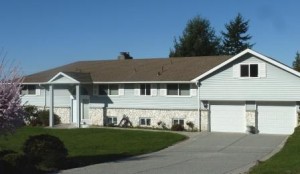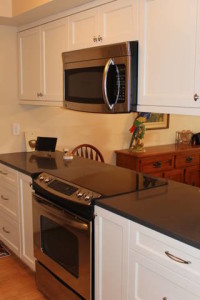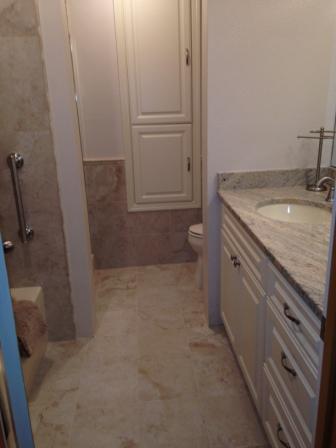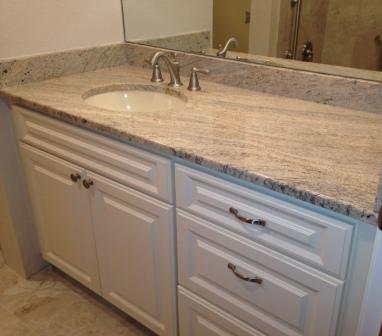Everyone wants the most bang for their buck, especially when it comes to home improvement, right? Ideally, you want to make improvements or upgrades that benefit you and your family’s needs and lifestyle, while also making smart investment decisions. It can be challenging and time consuming to research the myriad options. Luckily, there is a handy resource available to help. The Remodeling 2017 Cost vs. Value Report (www.costvsvalue.com) is a valuable tool for homeowners.
The Cost vs. Value Report examines 29 popular projects ranging from lower cost improvements to upscale remodels and home additions. It compares average costs by region across the U.S. and the value those projects are expected to yield at resale. Below you will find the top five projects in the greater Seattle area, according to and more fully described in the Cost vs. Value Report.
Garage Door Replacement

Garage Door Replacement
Topping the list with a potential 115% return on investment in Seattle is the replacement of an older garage door and tracks with an upscale, 4-section, insulated, high-tensile steel door, with lifetime warranty. Includes new heavy-duty galvanized steel tracks (reusing existing motorized opener), factory-applied paint, thermal panel seals, insulated windows in the top panel, galvanized steel hinges, and ball-bearing urethane rollers.
Alternatively, replacement with a mid-range, 4-section door and galvanized steel tracks yields a lesser, but still significant return of 84.6%. The example used also includes reusing the existing opener, and is an uninsulated, single-layer, embossed, painted steel door with galvanized steel hinges, nylon rollers, and 10-year limited warranty.
Manufactured Stone Veneer

Stone Veneer Accent
The second project with the highest possible return includes adding a stone veneer accent to the front of the home. This relatively modest investment can dramatically change the exterior and increase curb appeal. Imagine a street of similarly designed homes and one of them has been upgraded with this classic look. If you were shopping for a home on that street, which one would pop out at you?
At a significant potential return of 102%, this upgrade has great value. The example includes removing 300 square feet of vinyl siding from the entire bottom third of the front of the home. Replace with a manufactured stone veneer, two layers of water-resistant barrier over bare sheathing, corrosion-resistant lath and fasteners, and a ½ inch mortar scratch coat and setting bed.
Attic Insulation (fiberglass)
Adding or upgrading fiberglass insulation in the attic comes in as the third highest valued investment. It is estimated the improvement could yield as much as a 96.2% return on investment.
The project example describes air-sealing a 35×30 attic floor to address air leaks from conditioned space to unconditioned space. Fiberglass loose-fill insulation is then added, placing it over the top of any existing insulation that may already be present, until an R-30 insulation value is reached.
Minor Kitchen Remodel

Minor Kitchen Remodel
Coming in at number four is a modest remodel of a 200 square foot kitchen that is currently functional but in need of cosmetic updates.
Leaving the cabinet boxes intact it includes replacing the cabinet and drawer fronts with shaker style wood panels and new hardware. Replace laminate countertops, sink, faucet, flooring, wall covering, and paint the trim. Replace cook top/oven range and refrigerator with new energy-efficient models. Being careful to stay within a modest budget this type of remodel could yield a 94% return.
Entry Door Replacement (Steel)

Entry Door Replacement (Steel)
We all know how important first impressions can be. Nothing spruces up the look of a home quite like a new front door. Replacing the entry door is a relatively quick and easy job and adds instant curb appeal. For those handy around the home, it might even be a DIY project.
Ideally this investment may reduce utility costs and has a potential 91.5% return on a midrange 20-gauge steel door, including half-glass panel, new jambs, aluminum threshold, and new bored-lock lockset.
© 2017 Hanley Wood Media Inc. Complete data from the Remodeling 2017 Cost vs. Value Report can be downloaded free at www.costvsvalue.com.
Our expertise is matching customers with the most appropriate service professional for their project. Each contractor is licensed, bonded, and insured, has successfully passed a thorough screening process including reference checks and regular credential audits, and continues to meet high standards of workmanship and professionalism.














